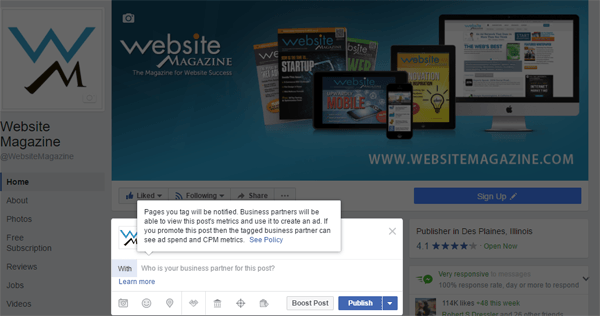Ranking on Link-Less Channels

- Open the Eat24 app and check menus and order food without ever visiting the mobile Web.
- Open Snapchat and chat with a friend, get an inside look at your favorite local bar, or get news stories without ever using SMS or a Web search bar.
- Open Zillow and contact a suggested retailer without searching for one yourself or leaving the app to call or email.
- Open Pinterest and find outfit, decorating or professional tips and purchase anything your heart desires from participating retailers without leaving the app.
- Open Facebook and get product and service recommendations, enlist customer service help from a company, pay a friend or watch a congressional hearing without searching, calling/emailing, banking or turning on the TV.
- Open Waze and find the quickest route to a destination, get reminded of upcoming calendar events and get a coupon for food along the way.
Websites will always play a crucial role in digital, but apps are increasingly hosting environments that do not rely on links to rank the content and the companies they surface nor rely on links for conversion events. Still, they are in essence making recommendations of who to follow, who to buy from and who to engage with - all of which can positively influence a company's bottom line if they are "ranked" by the apps or negatively if they never show up to relevant audiences (and their competitors do instead). Those responsible for search engine optimization (SEO) in their companies will be asked - if they aren't already - for strategies to increase visibility in apps that do not use traditional signals (mainly links) to determine quality and relevancy.
The good news is that if a person has a good understanding of what helps a website rank, they are halfway to increasing their visibility within apps. This is because Google is the foremost authority on algorithms with everyone else taking cues from the most popular site in the world. That said, much of the advice offered here also takes its cues from what helps websites ranks, combined with knowledge of the different app environments. Let's get started.
Claim, Complete Your Profile
Like the importance of a complete and up-to-date Google My Business account, companies need to ensure that if they have a profile on an app - whether it's one they created such as on Facebook or one that was created for them like on Yelp - that it too is accurate and complete. It is likely that a complete profile provides signals of quality and relevancy in most app environments. If a business can choose a category for their profile, choose it. If they can enter a phone number for their profile, enter one. If they can write an "about us" sentence or two, it better be written with a focus on keywords used to find their business. Not all apps support company profiles, but when they do, it's a surefire way to display what the company offers and its willingness to support new followers or business.
Actively Maintain
Whether it's posts to social media or an update to hours or a menu, apps can use the frequency at which a business publishes content to determine rank.
Use New Features
When an app team releases new features they are giving the businesses on them insight into what they are prioritizing at the moment. Facebook, for instance, ranks Live videos higher in its News Feed than other video types. Facebook also notifies its users when a friend of theirs or a brand they follow goes Live. Clearly, Facebook wants Facebook Live to catch on and companies looking for a ranking advantage on the network (or a boost in organic reach) would be wise to use this feature.
Facebook isn't alone in this regard, as features aren't released on a whim - usually requiring teams of engineers and many months to make them happen. Regardless of app, if a company is looking for a ranking advantage, new features should be used immediately following their launch. It's not out of the realm of possibility to think that early adopters of new features could be favored long after the feature reaches wider adoption.
Mention Others
Who is mentioning a brand and who is that brand mentioning - similar to inbound and outbound links when optimizing a site for conversion, many app environments allow profiles to mention another profile. By mentioning others, companies are indicating what types of profiles align with theirs, and, likewise, when they are mentioned they can be seen as a source on a subject.
With Facebook offering a new way to tag business partners - who can even see the metrics of the post (reach, clicks) - it's a matter of time before other apps provide this option.

Optimize Images
It's difficult to think of an app that does not prioritize images in some fashion. Each app, however, has different sizing requirements for images. It's a crucial step to resize images for each app. Tools like Adobe Spark automate this process - resizing images from Facebook's optimal size to Instagram's in one click - and some content management systems also resize elements quickly to display optimally across channels.
Pinterest, for instance, has very specific image recommendations to maximize reach. Read, "Pinterest Visibility Strategies for Pins & Profiles." Like with Google, it's important to be a student of the channels being optimized.
Link from Outside, In
There will come a time when website visitors who come to interact with a brand online will want to open an available app to complete their goals instead. Companies with relevant apps - whether it's their own (preferably) or a third party - will want to let visitors know they can conduct business with them within an app environment, if the visitor so chooses. Companies should offer deep links to apps for mobile users when appropriate.

Respond
Whether it's responding to negative or positive reviews or listening and responding to customer service compliments or complaints, responding to app users as the app allows could result in a rankings boost as it indicates the company cares about the experience their customers have (something apps care about too).
Facebook, for example, "rewards" businesses that reply quickly with a badge. It is likely that apps have - or will have - quality score of sorts that impacts their ranking and how their company and content will be delivered to their audience. Read, "News Feed Optimization Strategies for Better Organic Reach."
Yes, You Should Advertise
Over the years, studies have been conducted to prove that organic search rankings can be influenced to some degree by a company's paid search efforts whether directly or indirectly (like a person seeing the ad and, from it, being encouraged to click on the natural link).
With many apps becoming more "pay to play" type spaces, businesses should consider setting an advertising budget and testing their ad's impact on clicks, organic reach, conversions, etc. A lot of apps provide very sophisticated advertising opportunities that can be used in a self-service fashion, like dragging and dropping.
The Next Link-Less Channel
The channels that people frequent for information and use to communicate with one another will continue to change. Even so, each channel will likely continue to prioritize companies and content that optimize for the channel they are on, provide relevant material, and offer an experience that won't frustrate users and won't embarrass the channels if they surface them as a result or recommendation.









